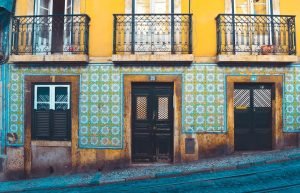
O legado da f1 em Portimão
Portimão, uma cidade costeira na região do Algarve, em Portugal, tornou-se um importante destino de corridas de Fórmula 1 nos últimos anos. Este desenvolvimento deve-se a vários factores
Portimão, a coastal city in the Algarve region of Portugal, is known for its stunning beaches and vibrant nightlife. However, beneath its modern facade lies a rich and fascinating history waiting to be discovered. From ancient Roman ruins to medieval castles, Portimão is home to a wealth of historical sites that offer a glimpse into the city’s past. Exploring these hidden gems not only allows visitors to learn about the history of Portimão, but also provides insight into the broader historical context of the region and its significance.
One of the most significant historical sites in Portimão is the Roman ruins of Abicada. Located just outside the city, these ruins offer a fascinating glimpse into ancient Roman life in the region. The site includes the remains of a Roman villa, complete with mosaic floors and intricate frescoes. These well-preserved artifacts provide valuable insights into the daily lives and cultural practices of the Romans who once inhabited this area.
The Roman presence in Portimão dates back to the 2nd century BC when the region was part of the Roman province of Lusitania. The Romans established a thriving port and trading center in what is now modern-day Portimão, taking advantage of its strategic location along the coast. The ruins of Abicada are a testament to this ancient civilization’s influence and legacy in the region.
Preserving and studying ancient ruins like those at Abicada is crucial for understanding our shared human history. These sites provide valuable archaeological evidence that helps researchers piece together the puzzle of our past. By exploring these ruins, visitors can gain a deeper appreciation for the rich cultural heritage that has shaped Portimão and its people.
Perched on a hill overlooking the city, the Fort of Santa Catarina is a striking reminder of Portimão’s military history. Built in the 17th century, the fort played a crucial role in protecting the city from invasions and pirate attacks. Its strategic location provided a vantage point from which soldiers could monitor and defend the coastline.
The architecture of the Fort of Santa Catarina is a testament to the military engineering of the time. The fort features thick stone walls, bastions, and cannons, all designed to withstand enemy attacks. Inside, visitors can explore the various rooms and chambers that once housed soldiers and stored ammunition.
The military history of Portimão is an important part of its identity. The city’s location along the coast made it vulnerable to attacks throughout history, and forts like Santa Catarina were essential for its defense. By visiting this historical site, visitors can gain a deeper understanding of the challenges faced by those who lived in Portimão in the past.
Religion has played a significant role in shaping the history and culture of Portimão, and one of the most important religious sites in the city is the Chapel of Our Lady of Guadalupe. This small chapel dates back to the 16th century and is dedicated to the patron saint of Portimão.
The architecture of the Chapel of Our Lady of Guadalupe reflects the religious beliefs and artistic styles of the time. The chapel features intricate Manueline details, including ornate carvings and decorative motifs. Inside, visitors can admire beautiful religious artwork and experience a sense of peace and tranquility.
Religious history is an integral part of Portimão’s identity, and exploring sites like the Chapel of Our Lady of Guadalupe allows visitors to connect with this aspect of the city’s past. These sites serve as a testament to the faith and devotion of the people who lived in Portimão throughout history.
For a comprehensive look at Portimão’s history, a visit to the Portimão Museum is a must. Housed in a former sardine canning factory, the museum showcases the city’s rich cultural heritage through a variety of exhibits and artifacts.
The museum’s collections cover a wide range of topics, including archaeology, ethnography, and maritime history. Visitors can explore ancient artifacts, learn about traditional crafts and customs, and discover the importance of fishing in the region. The museum also hosts temporary exhibitions that delve deeper into specific aspects of Portimão’s history.
Museums play a crucial role in preserving and sharing history. They provide a space for education and reflection, allowing visitors to engage with the past in a meaningful way. The Portimão Museum is an invaluable resource for both locals and tourists alike, offering a deeper understanding of the city’s past and its significance.
Another architectural gem in Portimão is the Church of Our Lady of Conception. This beautiful church dates back to the 15th century and is a blend of different architectural styles, reflecting the various eras in which it was built and renovated.
The church features elements of Gothic, Manueline, and Renaissance architecture, creating a unique and visually stunning structure. Inside, visitors can admire intricate woodwork, beautiful stained glass windows, and religious artwork.
Religious architecture is an important part of Portimão’s cultural heritage. The Church of Our Lady of Conception is not only a place of worship but also a testament to the artistic and architectural achievements of the past. Exploring this historical site allows visitors to appreciate the craftsmanship and creativity of those who came before.
Before the Romans and Moors, the region of Portimão was inhabited by prehistoric peoples who left behind a mysterious and intriguing legacy. The Alvor Megalithic Monuments are a collection of ancient stone structures that date back thousands of years.
These megalithic monuments, which include dolmens and menhirs, were likely used for religious or ceremonial purposes. They provide valuable insights into the beliefs and practices of the prehistoric peoples who once lived in the area.
Studying prehistoric history is essential for understanding the broader historical context of Portimão. These ancient sites offer a glimpse into a time before written records, allowing us to piece together the story of our ancestors. By exploring the Alvor Megalithic Monuments, visitors can connect with this ancient past and gain a deeper appreciation for the rich history of Portimão.
During the Moorish occupation of Portugal, the Castle of Alvor served as a strategic stronghold in the defense of the region. Built in the 8th century, the castle played a crucial role in protecting Portimão from invasions.
The architecture of the Castle of Alvor reflects its military function. The castle features thick stone walls, towers, and battlements, all designed to withstand enemy attacks. Visitors can explore the ruins of the castle and imagine what life was like during this turbulent period in history.
Moorish history is an important part of Portimão’s cultural heritage. The Castle of Alvor serves as a reminder of this period and its influence on the region. By visiting this historical site, visitors can gain a deeper understanding of the complex history of Portimão and its place within the broader historical narrative of Portugal.
One of the most unique architectural details in Portimão is the Manueline door of the Church of St. Lawrence. This intricately carved doorway is a prime example of Manueline architecture, a Portuguese architectural style that flourished during the Age of Discovery.
Manueline architecture is characterized by its ornate and intricate detailing, often featuring maritime motifs and symbols. The Manueline door of the Church of St. Lawrence is no exception, with its delicate carvings depicting sea creatures, ropes, and other nautical elements.
The Manueline style is unique to Portugal and reflects the country’s rich maritime history and exploration. The Manueline door of the Church of St. Lawrence is a testament to this legacy and serves as a reminder of Portugal’s important role in world history.
Architectural details like the Manueline door provide valuable insights into the historical context in which they were created. By studying these details, historians can gain a deeper understanding of the cultural, social, and political influences that shaped a particular period in history.
While exploring historical sites is an important part of understanding Portimão’s past, it is also essential to recognize the role that cultural institutions play in preserving and sharing history. The Portimão Municipal Library is one such institution that serves as a modern cultural hub with deep historical roots.
The library houses a vast collection of books, documents, and archival materials that provide valuable insights into Portimão’s history. Visitors can explore these resources, conduct research, or simply enjoy a quiet moment surrounded by knowledge.
Cultural institutions like the Portimão Municipal Library are essential for preserving and sharing history. They provide access to information and resources that allow us to delve deeper into the past and gain a better understanding of our shared heritage. The library serves as a bridge between the past and the present, connecting us to the history of Portimão and its people.
Portimão may be known for its beautiful beaches and vibrant nightlife, but beneath its modern exterior lies a rich and fascinating history waiting to be discovered. From ancient Roman ruins to medieval castles, the city is home to a wealth of historical sites that offer a glimpse into its past.
Exploring these hidden gems not only allows visitors to learn about the history of Portimão but also provides insight into the broader historical context of the region and its significance. Whether it’s exploring the Roman ruins of Abicada, visiting the Fort of Santa Catarina, or admiring the architectural details of the Church of Our Lady of Conception, each historical site offers a unique perspective on Portimão’s past.
By taking the time to explore and appreciate these historical sites, visitors can gain a deeper understanding of Portimão’s rich cultural heritage. These sites serve as a reminder of the people who came before us and the legacies they left behind. So, next time you find yourself in Portimão, take a moment to uncover its hidden gems and discover the fascinating history that lies beneath the surface.
If you’re planning a trip to Portimão and want to explore more of the Algarve region, check out this ultimate guide to Lagos, Portugal. It’s packed with information on the best attractions, restaurants, and activities in Lagos, making it the perfect companion to your historic site visits in Portimão. Leia mais

Portimão, uma cidade costeira na região do Algarve, em Portugal, tornou-se um importante destino de corridas de Fórmula 1 nos últimos anos. Este desenvolvimento deve-se a vários factores

The Algarve region in Portugal is renowned for its diverse attractions, including its flourishing wine industry alongside its famous beaches and scenic landscapes. The area’s

Portugal’s public transport system is an efficient and convenient way to explore the country. With a variety of modes of transportation available, including metro, tram,